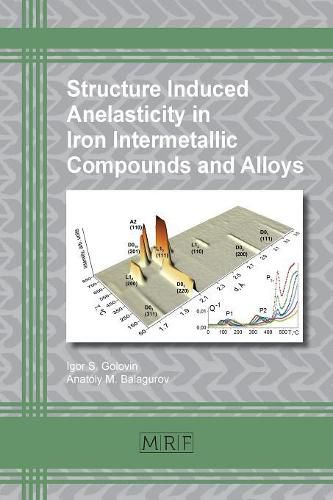Readings Newsletter
Become a Readings Member to make your shopping experience even easier.
Sign in or sign up for free!
You’re not far away from qualifying for FREE standard shipping within Australia
You’ve qualified for FREE standard shipping within Australia
The cart is loading…






This title is printed to order. This book may have been self-published. If so, we cannot guarantee the quality of the content. In the main most books will have gone through the editing process however some may not. We therefore suggest that you be aware of this before ordering this book. If in doubt check either the author or publisher’s details as we are unable to accept any returns unless they are faulty. Please contact us if you have any questions.
Different anelastic phenomena are discussed in this book with respect to iron-based binary and ternary alloys and intermetallic compounds of Fe3Me type, where Me are -stabilizing elements Al, Ga, or Ge. An introduction into anelastic behavior of metallic materials is given, and methods of mechanical spectroscopy and neutron diffraction are introduced for the better understanding of structure-related relaxation and hysteretic phenomena.
To characterize structure and phase transitions - both first and second order - in the studied alloys XRD, TEM, SEM, MFM, VSM, PAS, DSC techniques were used. Considerable emphasis is placed on in situ neutron diffraction tests that were performed with the same heating and cooling rates as the internal friction measurements. Different types of mechanical spectroscopy techniques were used to study mainly, but not exclusively, Fe-Al, Fe-Ga and Fe-Ge based alloys: from subresonance low frequency forced bending and torsion vibrations (0.00001 to 200 Hz) to high frequency resonance (above 200 Hz) free decay bending vibrations.
We discuss (1) thermally activated effects like Snoek-type relaxation, caused by interstitial atom jumps in alloyed ferrite, (2) Zener relaxation, caused by reorientation of pairs of substitute atoms in iron, (3) different transient effects due to phase transitions of the first and second order, and (4) amplitude dependent magneto-mechanical damping; especially with respect to structure, ordering of substitutional solid solution and phase transitions. Special attention is paid to magnetostriction of the alloys - the result of magneto-mechanical elastic coupling.
$9.00 standard shipping within Australia
FREE standard shipping within Australia for orders over $100.00
Express & International shipping calculated at checkout
This title is printed to order. This book may have been self-published. If so, we cannot guarantee the quality of the content. In the main most books will have gone through the editing process however some may not. We therefore suggest that you be aware of this before ordering this book. If in doubt check either the author or publisher’s details as we are unable to accept any returns unless they are faulty. Please contact us if you have any questions.
Different anelastic phenomena are discussed in this book with respect to iron-based binary and ternary alloys and intermetallic compounds of Fe3Me type, where Me are -stabilizing elements Al, Ga, or Ge. An introduction into anelastic behavior of metallic materials is given, and methods of mechanical spectroscopy and neutron diffraction are introduced for the better understanding of structure-related relaxation and hysteretic phenomena.
To characterize structure and phase transitions - both first and second order - in the studied alloys XRD, TEM, SEM, MFM, VSM, PAS, DSC techniques were used. Considerable emphasis is placed on in situ neutron diffraction tests that were performed with the same heating and cooling rates as the internal friction measurements. Different types of mechanical spectroscopy techniques were used to study mainly, but not exclusively, Fe-Al, Fe-Ga and Fe-Ge based alloys: from subresonance low frequency forced bending and torsion vibrations (0.00001 to 200 Hz) to high frequency resonance (above 200 Hz) free decay bending vibrations.
We discuss (1) thermally activated effects like Snoek-type relaxation, caused by interstitial atom jumps in alloyed ferrite, (2) Zener relaxation, caused by reorientation of pairs of substitute atoms in iron, (3) different transient effects due to phase transitions of the first and second order, and (4) amplitude dependent magneto-mechanical damping; especially with respect to structure, ordering of substitutional solid solution and phase transitions. Special attention is paid to magnetostriction of the alloys - the result of magneto-mechanical elastic coupling.